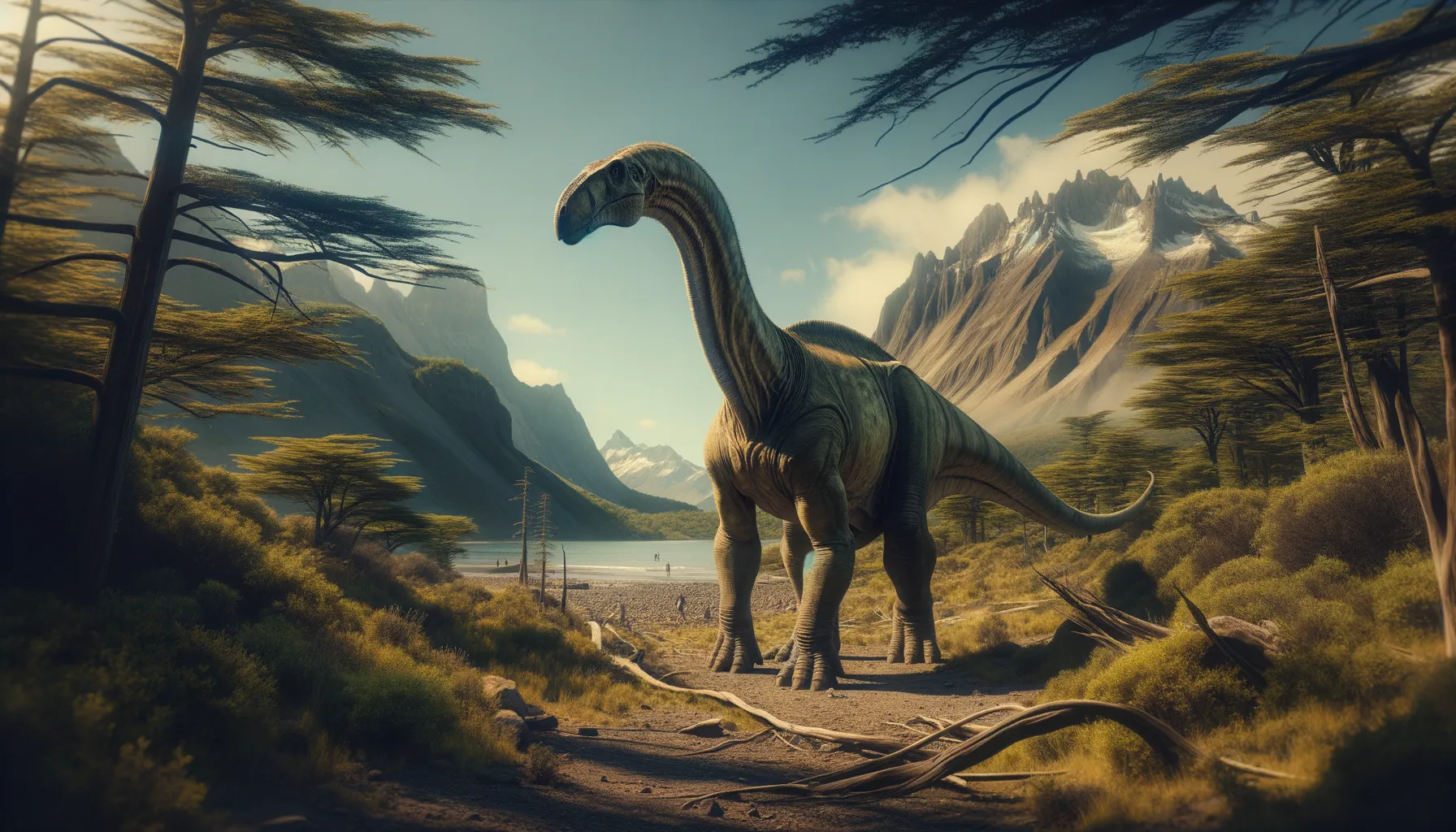
Bonatitan
A gentle giant of the forgotten ancient world.
Period
Cretaceous
Length
Likely stretched about 10 to 12 meters in length.
Height
Stood possibly around 4 to 5 meters at the shoulder.
Weight
Estimated to weigh several tons, as typical for a sauropod.
Bonatitan was a type of sauropod dinosaur, which roamed during the Late Cretaceous period in what is now Argentina. As a member of the Titanosauria, it possessed features typical of this group, such as a long neck and tail. Bonatitan's discovery added valuable information to our understanding of sauropod diversity during the Late Cretaceous, especially in South America, where these dinosaurs thrived right up to the end of the dinosaur era.
Diet
Bonatitan was a herbivore, feeding on a diet of plant material. It likely browsed on leaves and vegetation available in its environment, thanks to its long neck allowing it to reach both ground-level plants and those high up in trees.
Hunting
Being a herbivore, Bonatitan did not hunt. Instead, it spent much of its time foraging for food. Its large size helped deter predators, allowing it to peacefully browse for extended periods.
Environmental challenges
Bonatitan faced various environmental challenges, including fluctuating climate conditions. Seasonal changes would have affected the availability of food sources. Additionally, the Late Cretaceous period was marked by volcanic activity, which could have disrupted ecosystems. However, Bonatitan's adaptability would have been a key factor in its survival during these dynamic times.
Speed
Bonatitan was likely not very fast due to its large size and bulk, adapted more for steady movement across its environment.
Lifespan
It possibly lived several decades, akin to other large sauropods.
First discovery
Bonatitan fossils were first discovered in Argentina in the early 2000s.
Fun Facts
- Bonatitan was a small titanosaur, a group of long-necked dinosaurs, that lived during the Late Cretaceous period.
- It roamed what is now Argentina, a hotspot for dinosaur discoveries.
- Despite being a titanosaur, Bonatitan was relatively small, reaching only about 6 meters in length.
- The name 'Bonatitan' means 'good titan', reflecting its classification among the titanosaurs.
- Fossils of Bonatitan were first discovered in the La Colonia Formation of Patagonia in the early 2000s.
- Bonatitan's remains help paleontologists understand more about the diversity of titanosaurs in South America.
- Its discovery hints at the range of sizes and adaptations that titanosaurs developed during their evolutionary history.
Growth and Development
Like other sauropods, Bonatitan experienced rapid growth during its early years. This quick growth was essential for reaching a size that would deter predators. Over time, as it matured, its growth rate likely slowed. The dinosaur's development was closely linked to its dietary intake, ensuring it could sustain its massive body.
Habitat
Bonatitan inhabited what is now Argentina's lush, forested regions during the Cretaceous. Its environment would have consisted of vast forests and river systems, providing abundant vegetation. The region supported diverse flora and fauna, making it an ideal ecosystem for a large herbivore. Access to both land and water resources would have been crucial for its survival.
Interaction with other species
Bonatitan shared its habitat with other plant-eating dinosaurs as well as various carnivores. The presence of other sauropods and herbivorous species would have required resource sharing. Predatory threats likely influenced social behaviors, encouraging group dynamics for better protection. Despite competition, the ecosystem supported a variety of species, each occupying its niche.
Natural lifespan
In natural circumstances, Bonatitan's lifespan could reach several decades, allowing it to grow and reproduce effectively.
Reproduction
Bonatitan reproduced by laying eggs, likely in nesting grounds shared with others. Nesting sites would have been chosen carefully to provide safety from predators and environmental hazards. Hatchlings would have been vulnerable, growing rapidly in their early years to increase their chances of survival. Parental care post-hatching is speculative and debated.
Social behaviour
Bonatitan may have exhibited social behaviors common among sauropods, like forming herds or groups. Such social structures would have provided protection against predators. Within these groups, communication would have been important for coordinating movements and alerting to threats. The herd dynamic also facilitated feeding efficiently over large areas.
Fossil locations
Fossils of Bonatitan have predominantly been found in Argentina. The country's rich Cretaceous deposits have yielded numerous dinosaur discoveries, adding to global understanding of sauropod distribution. These fossils provide insight into the adaptability and evolution of titanosaur species in South America. Continued excavation in these regions may uncover further Bonatitan remains.
